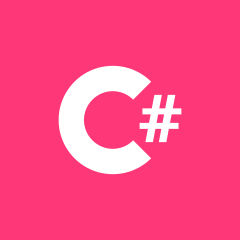通用约束,其中T:struct和T:class
我想区分以下几种情况:
普通值类型(例如int)
可为空的值类型(例如int?)
引用类型(例如string)-可选,我不在乎是否将其映射到上面的(1)或(2)
我想出了以下代码,在情况(1)和(2)下工作正常:
static void Foo<T>(T a) where T : struct { } // 1
static void Foo<T>(T? a) where T : struct { } // 2
但是,如果我尝试检测这种情况(3),它将无法编译:
static void Foo<T>(T a) where T : class { } // 3
错误消息是类型'X'已经定义了具有相同参数类型的成员'Foo'。好吧,我无法以where T : struct和区别where T : class。
如果删除第三个函数(3),则以下代码也不会编译:
int x = 1;
int? y = 2;
string z = "a";
Foo (x); // OK, calls (1)
Foo (y); // OK, calls (2)
Foo (z); // error: the type 'string' must be a non-nullable value type ...
如何Foo(z)进行编译,将其映射到上述函数之一(或第三个具有另一个约束的函数,我没有想到)?
 冉冉说
冉冉说浏览 672回答 3
3回答
-

胡子哥哥
约束不是签名的一部分,但参数是签名的一部分。在重载解析过程中会强制执行参数约束。因此,让我们将约束放入参数中。很难看,但是可以用。class RequireStruct<T> where T : struct { }class RequireClass<T> where T : class { }static void Foo<T>(T a, RequireStruct<T> ignore = null) where T : struct { } // 1static void Foo<T>(T? a) where T : struct { } // 2static void Foo<T>(T a, RequireClass<T> ignore = null) where T : class { } // 3(迟到比没有迟到六年吗?) -

BIG阳
在第一种方法上删除结构约束。如果需要区分值类型和类,则可以使用参数的类型来实现。 static void Foo( T? a ) where T : struct { // nullable stuff here } static void Foo( T a ) { if( a is ValueType ) { // ValueType stuff here } else { // class stuff } }
 随时随地看视频慕课网APP
随时随地看视频慕课网APP
相关分类


 C#
C#